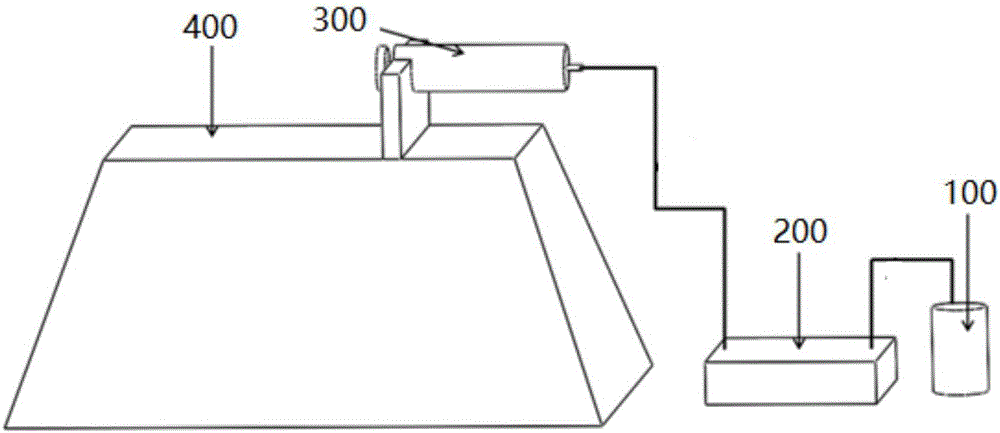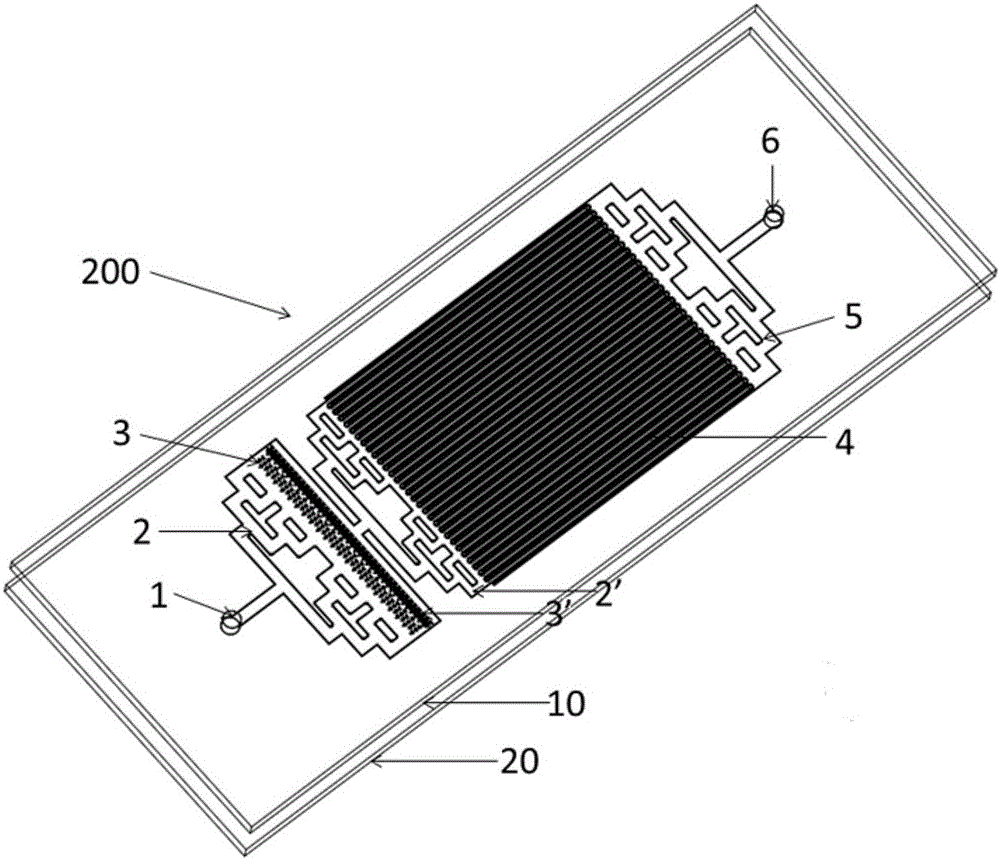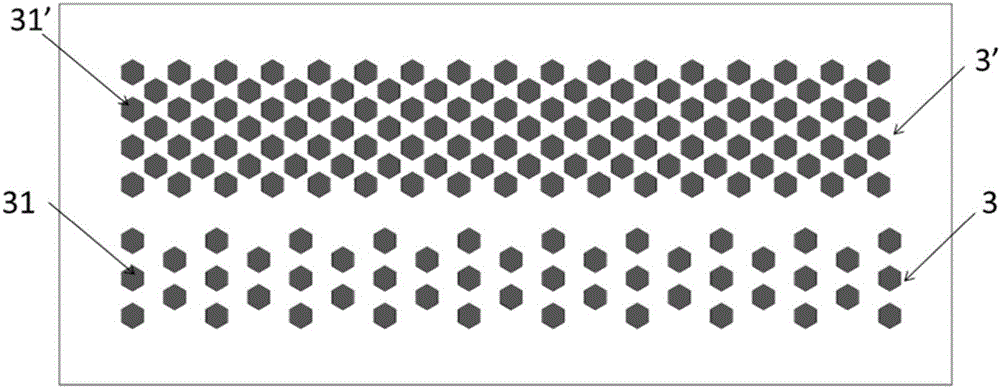Micro-fluidic device and method for detecting circulating tumor cell on basis of dimension
A microfluidic device and tumor cell technology, which is applied in the field of microfluidic devices for size-based detection of circulating tumor cells, can solve the problems of low detection sensitivity, complicated detection process, and long detection time of circulating tumor cells, so as to improve sensitivity, The effect of low precision requirement and low production cost
- Summary
- Abstract
- Description
- Claims
- Application Information
AI Technical Summary
Problems solved by technology
Method used
Image
Examples
Embodiment 1
[0042] Example 1 Preparation of microfluidic chip
[0043] 1.1 According to the above-mentioned chip structure designed in the present invention, utilize AutoCAD software to draw out required figure, make film mask plate; With four-inch monocrystalline silicon chip as substrate, carry out thermal oxidation to form an oxide layer of one deck 2 μm, then carry out Photolithography, reactive ion etching, adhesive stripping and cleaning, photolithography, deep reactive ion etching, etching out the height of the filter channel 43 . Concentrated H 2 SO 4 Wash with hydrogen peroxide, remove the photoresist, perform deep reactive ion etching according to the silicon dioxide pattern again, etch out the height of other channels of the chip, and finally obtain a silicon wafer mold with a microstructure.
[0044] 1.2 Place the silicon wafer mold and the open centrifuge tube containing 10 μL of fluorosilane in a vacuum drying oven, vacuum to negative pressure to vaporize the fluorosilane,...
Embodiment 2
[0046] Example 2 Using the microfluidic chip prepared in Example 1 to detect circulating tumor cells
[0047] First, centrifuge 2 mL of blood sample, absorb the upper layer of plasma, and then lyse the remaining red blood cells twice, then resuspend the remaining cells with 500 μL of 4% paraformaldehyde solution, fix the cells, and finally store them in a 4°C refrigerator for later use. For detection, first draw 250 μL of the treated cell suspension and dilute it to 1 mL for later use. The flow rate of the sampling pump 400 is set to 15mL / L, and the diameter is set to 19mm. One end of the waste liquid collection syringe 300 is connected to the sample outlet 6 of the microfluidic chip 200. The sample inlet 1 of the fluidic chip 200 draws the sample into the microfluidic chip 200; then washes the chip with 200 μL of PBS (containing 0.05% Tween) washing solution, and the smaller red blood cells and white blood cells are washed out of the microfluidic chip. The chip 200 enters th...
Embodiment 3
[0049] Using the device provided in Example 1 and the detection method provided in Example 2, the flow rate of the sampling pump was set to 10mL / h, 15mL / h, and 17mL / h respectively, and the lung cancer cell line H446 suspension of known concentration was tested. Calculate the capture efficiency of H446 cells at different flow rates, see the experimental results Figure 5 , as can be seen from the figure, the capture efficiency of the microfluidic chip is the highest at a flow rate of 15mL / h, as high as 94%.
PUM
| Property | Measurement | Unit |
|---|---|---|
| diameter | aaaaa | aaaaa |
Abstract
Description
Claims
Application Information
 Login to View More
Login to View More - R&D
- Intellectual Property
- Life Sciences
- Materials
- Tech Scout
- Unparalleled Data Quality
- Higher Quality Content
- 60% Fewer Hallucinations
Browse by: Latest US Patents, China's latest patents, Technical Efficacy Thesaurus, Application Domain, Technology Topic, Popular Technical Reports.
© 2025 PatSnap. All rights reserved.Legal|Privacy policy|Modern Slavery Act Transparency Statement|Sitemap|About US| Contact US: help@patsnap.com



